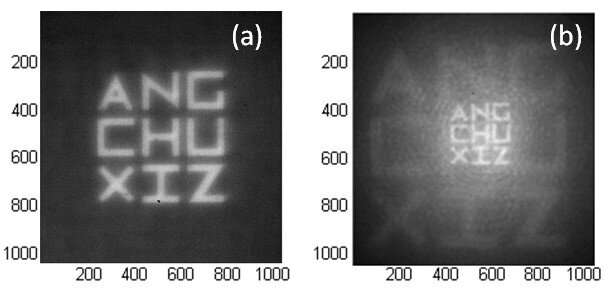Theon-Kepler bifocal telescope helps advance radial-shearing interferometry

Recently, researchers at Shanghai Institute of Optics and Fine Mechanics of the Chinese Academy of Sciences have proposed a new kind of telescope structure, a Theon-Kepler bifocal telescope, to realize radial-shearing interferometry in common-path setup. This research has been published in Applied Optics.
The Kepler telescope was first invented in 1611, and has important applications in astronomy and optics. Apart from imaging in the optical field, it is one of the most classical structures of shear interferometry, which is widely used in wavefront detection, imaging, optical element quality detection, and adaptive optics because it is easy to design in a common-path setup, requires no standard reference waves, and has strong system stability.
For radial-shearing interferometry, the most important thing is to divide the incident light into two beams with different sizes so as to achieve shearogram. The most widely used method is to adopt a loop structure composed of a telescope system. However, this structure often requires multiple optical devices such as mirrors, lenses and a beam splitter. This makes it complicated and inconvenient to adjust when applied to different optical systems.
Moreover, the difficulty in processing a large-aperture standard plane mirror and lens makes it unsuitable for large-aperture optical systems. A Theon-ladder sieve is an amplitude-only diffractive lens and can be easily fabricated in large scale by current lithography.

In the experiment, the researchers chose LED as the light source, and used a multi-wavelength superposition method to replace multi-exposure recording of the monochrome beam by rotating a diffuser.
When the test object was placed at the front long focal plane of the first Theon-ladder sieve, the biplanar images were produced, and the responding lateral magnifications were -1.4142 and -0.7071, respectively. In this case, the incident wavefront was divided into two beams with different sizes by the Theon-Kepler bifocal telescope, and the radial-shearing interference resulted.
According to the researchers, although the background light affected the recording somewhat due to the diffractive lens, the signal-to-noise ratio of the shearogram was high enough to reconstruct the test wavefront. The simulation results, consisting of a test wavefront and a peaks function, showed that the high-precision reconstructed image could be realized from a frame of the shearogram.
The proposed setup is not only a common path, but also has the functionality of the cyclic radial shearing interferometry.
More information: Yaocun Li et al. Radial-shearing interferometric imaging with Theon-Kepler bifocal telescope, Applied Optics (2020). DOI: 10.1364/AO.392574
Provided by Chinese Academy of Sciences





















